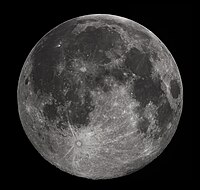
Photo from wikipedia
Polar bodies are tiny cells that are extruded during oocyte meiosis and are generally considered not essential for embryonic development. Therefore, polar bodies have been widely used as important materials… Click to show full abstract
Polar bodies are tiny cells that are extruded during oocyte meiosis and are generally considered not essential for embryonic development. Therefore, polar bodies have been widely used as important materials for the preimplantation genetic diagnosis of human embryos. Recent studies have shown that polar bodies mediate embryonic development and that their morphology is related to embryo quality and developmental potential. However, the relationship between the emission of the polar body and embryonic euploidy remains unclear. In this study, a total of 1,360 blastocyst trophectoderm (TE) biopsies were performed, and blastocyst ploidy results were correlated with the state of polar bodies. The results showed that polar body angle size and polar body status are not directly related to whether the blastocysts are euploid, aneuploid, or mosaic (p > 0.05). Therefore, in the process of clinical embryo selection, embryologists should not predict the euploidy of blastocysts based on the state of polar bodies, thus affecting embryo selection.
Journal Title: Frontiers in Genetics
Year Published: 2022
Link to full text (if available)
Share on Social Media: Sign Up to like & get
recommendations!